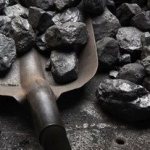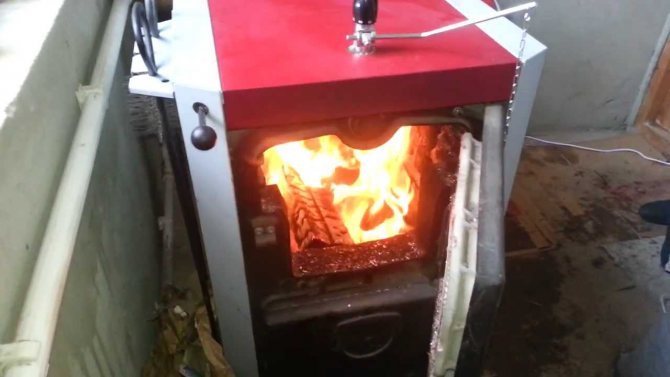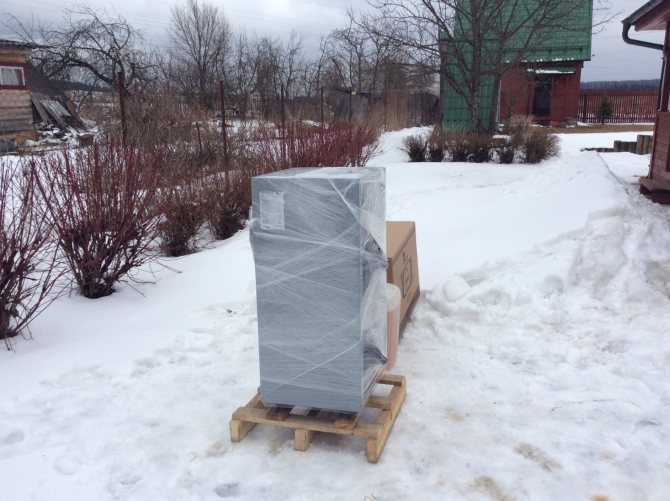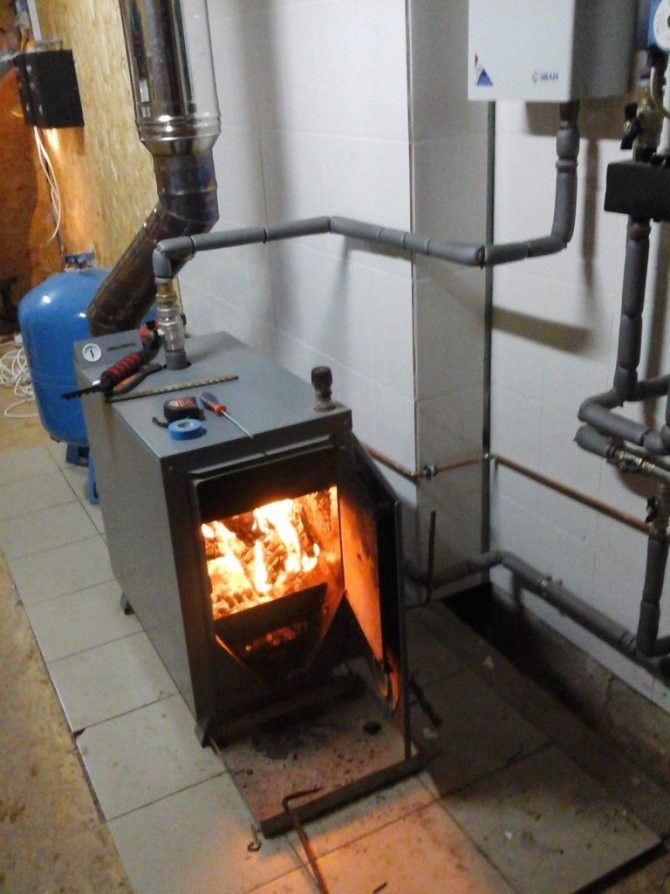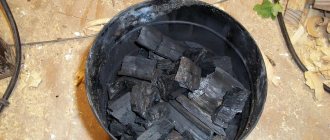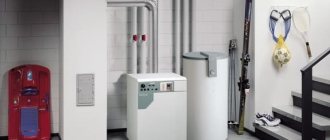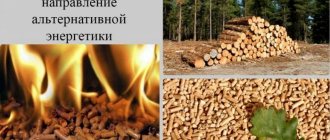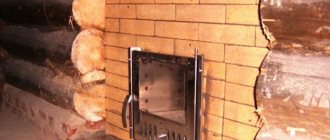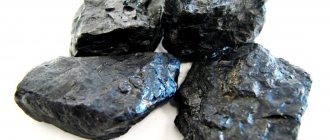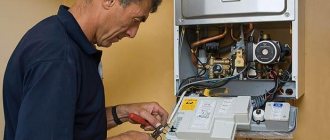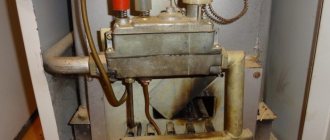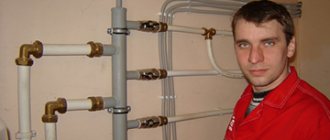Coal heaters are designed for higher temperatures than wood heaters. Running on high-calorific fuels, they provide more heat and are able to maintain productivity for longer on one tab.
In order for all these advantages to manifest themselves in full force, you need to know how to properly heat the boiler with coal.
The principle of operation of a coal boiler
There are several types of coal-fired boilers:
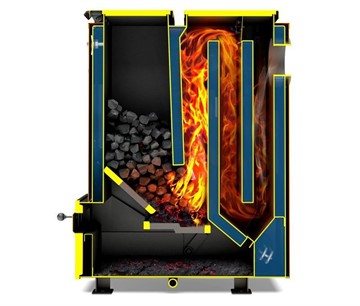
- direct burning... The fuel simply burns in the firebox, bounded from below by a grate. There is an ash chamber under it. The generated heat is communicated to the heat carrier passing through the heat exchanger;
- pyrolysis... The action is based on the ability of fossil fuel to decompose when heated without air access to combustible gases (gas generation or pyrolysis). The firebox is divided into two chambers. In one, gas generation takes place, in the other, the resulting mixture of gases is burned. Air supply to both chambers is controlled by automatic equipment;
- long burning.
Long-burning boilers are divided into two types:
- top burning... The increased volume firebox has an upward-elongated shape. Fuel is ignited from above, air is supplied strictly to the combustion zone. Due to this, the fuel load is burned longer than in a direct combustion boiler;
- forced air... It is blown by a fan through the duct. Upon reaching the desired temperature of the coolant, the controller turns off the blower and the air duct is closed by a damper (lowers under its own weight when the fan is turned off). After the coolant has cooled down, the fan starts up again and ignites the glowing coal.
Modern coal-fired boilers are equipped with an electronic control unit and an automation system that makes the heater's operation safe and efficient.
For regions with unstable power supply, non-volatile boilers are produced, the automatic operation of which is provided by thermogenerators, thermocouples, bimetallic plates and lever systems.
Features of the operation of modern solid fuel boilers
Modern generation solid fuel boilers are equipped with a pressurized system and an automatic control unit. The electronics control the temperature of the heating medium using a sensor installed in the heat exchanger. Depending on the temperature regime, the automation gives commands to turn on and off the blower, which supplies air to the combustion chamber and contributes to the effective removal of combustion products through the chimney. Thus, the intensity of the fuel combustion process is regulated depending on the temperature of the coolant.
Thus, the user takes the minimum necessary participation in the operation of the equipment. His concern about how to heat the TT boiler comes down to filling in fuel at a certain frequency. After that, the boiler is switched on to the intensive combustion mode. As the temperature rises, the intensity of combustion weakens, and when the temperature reaches a maximum, the boiler goes into smoldering mode. After the temperature of the heating medium drops below the set value, the boost is switched on again.
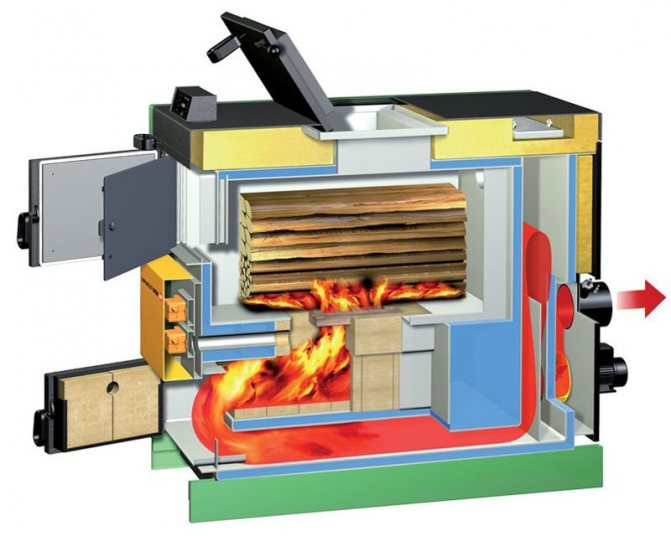

Timely loading of fuel into the TT boiler is the main task of the user, which cannot be automated. The number and frequency of tabs is determined based on the boiler power and the required temperature regime. If you skip the laying time, then the boiler will be able to maintain operation in the smoldering mode only for a limited time, after which it stops.
Of great importance is how to heat a solid fuel boiler. Today, the following fuels can be used for this purpose:
- firewood;
- coal;
- fuel briquettes;
- pellets.
To get the most out of it, you need to know how to efficiently heat a solid fuel boiler with different types of fuel.
Which coal to choose for the furnace?
The fuel is selected in accordance with the recommendations of the boiler manufacturer.
The fact is that there are several types of coal, and they differ significantly in characteristics:


- brown coal... The most common and of the least quality: burns quickly, smokes and emits an unpleasant odor, generates a lot of waste: structure - earthy, color - brown or black, heat capacity: 16-22 MJ / kg, cost: 3.5-4.5 thousand rubles ... per ton;
- coal... Black with metallic or resin sheen. Good quality and at the same time affordable cost. There are several varieties, the most common is long-flame coal: heat capacity: 26-32 MJ / kg, cost: 5.5-7 thousand rubles. per ton;
- anthracite... Gray-black with a luster of glass or metal. The highest quality and most expensive: heat capacity: 32-36 MJ / kg, cost: 8-10 thousand rubles. per ton.
The use of the "wrong" coal leads to cost overruns or damage to the heater. So, when anthracite burns in the optimal mode, the temperature in the furnace reaches 2200-23000C. When loading such fuel into a conventional steel boiler, designed for brown coal, it will quickly burn out.
Or you will have to "hold back" the combustion by cutting off the air supply, because of which the efficiency of anthracite will drop sharply and the cost of purchasing this expensive coal will turn out to be unjustified.


Anthracite
Another example: long-flame coal due to high humidity is unsuitable for a pyrolysis boiler - condensate is abundantly formed in the chimney, which mixes with the combustion products and turns from this into a viscous resinous substance. These heaters require gas-fired coal.
There are toxic types of coal containing more than 2% sulfur. It is strictly forbidden to use them as fuel for furnaces and boilers: during combustion, sulfur oxide (sulfur dioxide) is formed, poisoning the air and destroying metal parts.
How and with what coal is it better to heat a solid fuel boiler
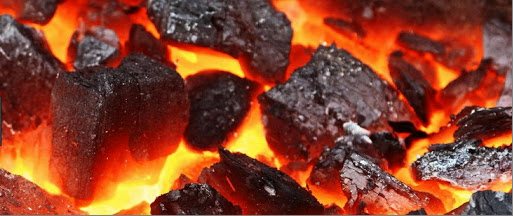

For household consumption, several brands of coal and brown coal are usually offered, in addition, charcoal is also used. But, before loading the furnace with new fuel, you must carefully read the instructions for using a solid fuel boiler, it is in it that the fuel brands recommended by the manufacturer are indicated.
For domestic and industrial heating boilers, the documentation indicates the coal grades that are optimal for use. The fact is that during the production of boilers, finished products are tested and certified for use with different types of fuel. The heat capacity of coal of one group may be higher than the heat capacity of the grades recommended by the manufacturer, which may jeopardize the normal operation of the equipment.
One of the conditions for how to properly heat a boiler with coal is the correct choice of fuel, in addition to specifying the type and brand, manufacturers recommend focusing on the amount of harmful impurities, dust, ash content and calorific value. This information is indicated in the fuel passport, but exactly what qualities a particular brand possesses should be found out in more detail.
Coal
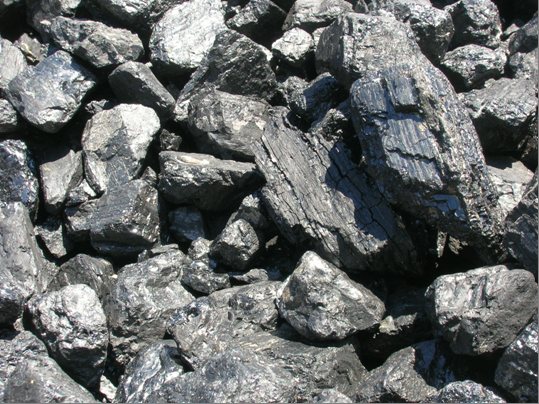

This type of coal is the most common. In most brands, the calorific value averages around 5500-6000 kcal / kg. This indicator is associated with a high hydrocarbon content, this substance is about 75% by weight. When burned, coal forms from 2 to 5% ash, but it should be said that this applies to a high-quality product that has been purified from stone.Coal grades are divided according to the size of the fraction, mass and calorific value. In addition, there is a gradation according to how quickly the fuel burns. Almost all brands of coal are suitable for burning universal solid fuel boilers of the classic type. But for devices of long burning, such fuel is not suitable, it has a rather high temperature index, which adversely affects the equipment.
Brown coal
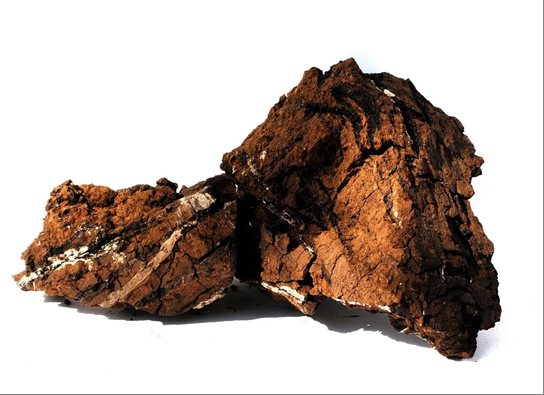

This fuel is mainly used in areas where it is mined. It so happened historically that brown coal has not found widespread use and is mainly a product of local consumption. The calorific value of brown coal is lower than that of hard coal, it is about 3000-3200 kcal / kg, this figure is almost 2 times lower than that of the lowest grade coal. A feature of this product is the fact that it leaves more ash after combustion. In domestic heating installations, brown coal is used, and a briquette from it with a mass fraction of moisture content of about 50%.
Anthracite
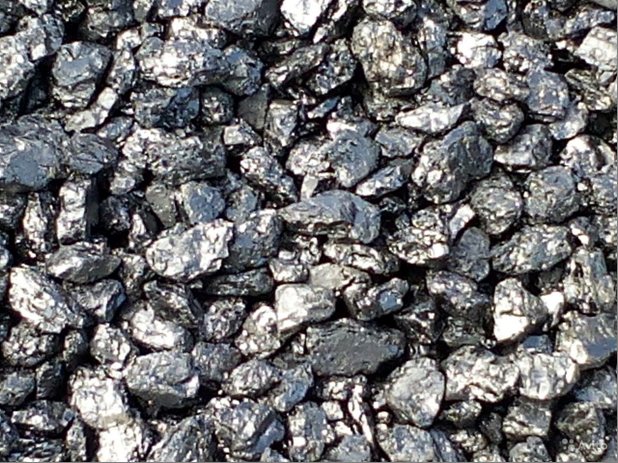

When choosing a fuel that has the highest calorific value, you should focus on anthracite, one of the best types of coal for combustion in a boiler. The calorific value allows the release of 9000 kcal / kg during combustion, which is one of the highest indicators. However, after combustion, anthracite forms a large, up to 7%, amount of ash and up to 5-7% of coals that have not burned.
Lignite
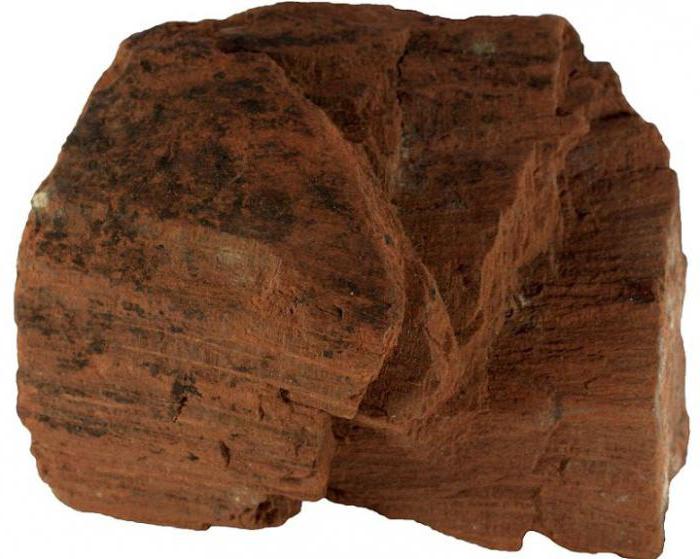

This type of coal raw material is intended for consumption in industrial plants. In everyday life, many manufacturers do not recommend using it because of its specific structure and a large amount of ash residue.
Coal processing products


Conventionally, these types of products can hardly be attributed to any type of solid fuel made from natural hydrocarbons, but it is also quite difficult to ignore them. This type of product includes coal processing products - coal briquettes and coke.
The first is a briquetted type of fuel, obtained on the basis of pressing the waste of coal reduction at concentration plants. Simply put, this is a pressed fine fraction of high-quality coal, which remains when sifting the main mass. Such fuel is mainly used in industrial enterprises, since it releases a large amount of sulfur during combustion, and the ash content in the residue often exceeds 10% of the initial mass.
Coal dust in its pure form is practically not used in individual heating systems, since the technology of burning dust in solid fuel household boilers is not provided. In industrial production, in the energy sector with thermal generation and even in metallurgy, the use of dust is justified, it competitively replaces expensive natural gas in the form of a water-dust mixture, but in small boilers designed for 7-15 kW of power, this method is too expensive.
Coking coal, which is the main fuel for blast furnace iron production, can be successfully used at home. True, you need to remember that the energy value is from 5.6 to 7.0 thousand kcal / kg. The average ash content is about 8%, volatile substances from 3.2 to 4.2%, sulfur in the coke composition is 1-2%. Pure carbon makes up at least 87% of the substance.
Gas coal
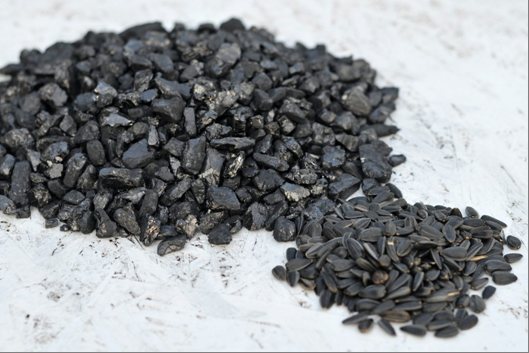

This type of coal in everyday life is often called a combustible. Coal of this group saturated with light combustible gases has a small fraction, only 3, maximum 4 cm in diameter. Such a product is excellent for kindling, since it quickly begins to maintain combustion and also quickly raises the combustion temperature to 400-600 degrees, which is quite enough to ignite the bulk of the main fuel coals. But using it for a full-fledged firebox is unlikely to work, its calorific value is small, and the combustion time is 4-5 times higher than that of anthracite or coke.
Charcoal


Until recently, charcoal was one of the most common coal products. Today this coal has given way to stone coal, but it still remains in demand in private households. When burned, it forms from 7000 to 8000 kcal / kg, which is a good indicator with ordinary firewood. After combustion, 84% of carbon is formed from 2 to 2.8% of ash. It is especially good to use charcoal in solid fuel boilers of the pyrolysis type and long-burning boilers.
How to use solid fuel plants correctly?
The efficiency of the TT boiler reaches its maximum when burning in the optimal mode, they are guided by the color of the flame:
- red... Sign of insufficient air supply. Fuel burns longer, but does not burn completely. This leads to a decrease in efficiency and the formation of smoke, which is very harmful to the environment. The exhaust temperature is low and condensation forms abundantly in the chimney. In combination with "bad" smoke, it forms a caustic cocktail that is hazardous to health (do not drain near edible plants);
- yellow... Optimal combustion mode, air is supplied in sufficient quantity;
- white... Sign of excessive air intake. The draft is too strong, the fuel burns out quickly, the lion's share of the generated heat is carried away into the chimney.
The temperature of the coolant in the "return" must not be allowed to drop below + 500C. Otherwise, moisture condenses on the heat exchanger and reacts with the sulfur in the smoke to form sulfuric acid. The latter corrodes the heat exchanger.
How does it work
The equipment is a simple, two-chamber device. Other fuel is tossed into the upper chamber as required. Its bottom is mesh, therefore, with the time of combustion, residues and combustion products under the influence of gravity fall into the lower chamber. When filling, you need to delete them from there. The grill between the chambers is usually made of strong, refractory metals. Most often it is cast iron.


Bookmark scheme
To automate the process, a number of devices can be installed that would control the draft and operation of the furnace. In the absence of automatic regulation systems, functioning is carried out due to the natural pressure difference between the external and internal environment. A boiler with the addition of a long-term burning system and automation is much easier to maintain, but takes up large areas. The cost of such equipment is also much higher.
The automation includes a pressure sensor and an air supply system. By controlling the oxygen supply to the furnace, it is possible to adjust the combustion rate. The more free gases in the boiler, the higher the burning rate of the fuel cells. Reduced access leads to a decrease in heat transfer from the boiler. However, the burning time increases.
The temperature indicator is regulated by a sensor system. If desired, you can set the operating modes of the boiler. When a certain temperature is set, which has been set on the monitoring display, the sensor is triggered and sends a signal to the electronics to turn off the fan.
After that, access to air and combustion rate are significantly reduced. Conversely, when the temperature in the firebox drops, the ventilation system is activated and the coal starts to ignite. Taking into account these features of the functioning of the boiler, it is possible to derive the rules of operation and fuel injection.


Heating circuit
Preparing the stove for kindling
Before lighting a stove or boiler after a long period of inactivity, do the following:


- inspect the firebox for cracks. Through them, poisonous carbon monoxide will enter the room. Found cracks are welded or covered with clay mortar (brick oven);
- check the condition of the chimney. If there is debris or bird nests, the smoke exhaust duct is cleaned.It is also necessary to remove soot: it narrows the chimney and is capable of catching fire, which will lead to damage to the structure, and possibly a fire;
- clean the firebox from soot and wipe it with a dry cloth;
- remove flammable objects and materials near the heater.
Now, if coal is available, the boiler can be fired.
How to remove ash?
If the boiler is heated exclusively with wood, then cleaning the combustion products is quite simple. After burning out, the ash will crumble down through the cast-iron grate. Then it can be removed from there with a spatula. However, it is advisable to remove flammable objects and liquids while doing this.
With the use of coal, the burnout time is significantly longer. Therefore, it is extremely difficult to clean the slagged niche in a timely manner. To prevent such an effect, it is required to additionally lay layers of coal with interlayers of wood. Or by significantly increasing the temperature in the boiler. This is easily accomplished by increasing thrust, so either activate the fan or use boosting techniques.
The use of solid raw materials as an element for heating has several advantages over wood. Heating with peat or carbon-based analogs. Firing up is much easier, and solid fuel minerals will burn with a higher temperature. The use of combined materials helps a lot. Using firewood in combination with coal is the best option for a private house.
How to properly melt?
A coal stove or boiler is melted in the following sequence:
- open the firebox door and close the blower;
- paper is placed on the grate and chips, cake or other flammable material are placed on it. Here, in the form of a hut or a well, they lay in a small amount of firewood. Set fire to paper;
- close the firebox door and open the blower. In the future, each time before opening the door of the firebox, the blower is closed, and after the door is closed, it is opened;
- after the combustion of the wood bookmark, fine coal is laid on it in a thin layer;
- after the coal burns out, it is stirred up with a poker to prevent caking. Otherwise, air will cease to flow into the firebox;
- the main fuel is laid on the burned-out fine coal - coarse coal with a layer thickness of up to 60 cm;
- the blower flap is slightly opened so that the optimal combustion mode is established in the firebox.
When firing up the boiler with forced air supply, instead of opening the damper, the controller controlling the fan is turned on and the desired temperature of the coolant is set on it.
Main heating period
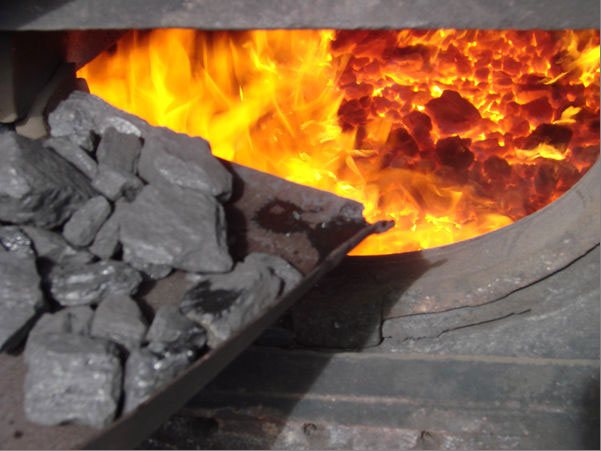

Conventionally, the process of how to properly heat a boiler with coal can be divided into several stages - the first ignition, the second period of the main combustion, the stage of achieving stable combustion, and finally, attenuation.
The main heating period usually falls on the moment when the firewood forms productive coals for backfilling with fossil fuel. It depends on when the moment of filling the first portion of fuel is chosen and how to properly heat the solid fuel boiler. It usually takes 4-5 minutes from the moment the paper starts burning until the logs of the main bookmark of the tree are engulfed in flames, but this is with normal draft and an open blower damper. You can check what is happening in the firebox by opening the firebox door - with careful opening, the firebox will illuminate with an even bright flame, which means that the moment has come for filling the first portion of coal.
Coal of fine fraction 2-4 cm in diameter is first poured into the furnace. At about this stage, you will need from 0.5 to 1 kg of fuel or 1-2 scoops. Coal is poured through the fire door and made so that its layer is evenly distributed over the entire area of the fire. Immediately after backfilling, the door closes, and the latch on the blower door opens slightly to increase the access of oxygen to the combustion space.
It is worth checking what is happening in the firebox in 10-12 minutes. This time is enough for the temperature to rise to 400 degrees and the fuel starts to burn, emitting enough heat. During this period, you should pay attention to the readings of the thermometer on the boiler, if the temperature went up sharply and the coolant began to warm up better in pipes and radiators, then it’s time to add another portion of fuel to the boiler.
According to the rules on how to properly heat a boiler with coal, you need to add from 3 to 5 kg of anthracite or medium-fraction coal. The coals should be medium in size, 4-7 cm in diameter. Just like the fuel, the filling is done through the fire door with a spatula or scoop. If possible, the coal is scattered over the entire area of the furnace so that the layer is about 10-15 cm (although much here depends on the size of the furnace). After the door of the furnace is closed, the thermostat is set and the boiler is switched to a long-term burning mode, when it itself regulates the opening and closing of the oxygen supply valve.
Advantages of home heating with coal
- Coal is mined on Russian territory, and prices for it do not jump.
- To use this fuel, you do not need to install special gas pipelines, as for gas heating.
- Its price is relatively low compared to liquid fuel or gas.
- Easy to transport, it does not require special storage conditions.
- Heating with coal is beneficial, because it retains heat at the time of smoldering. Thus, the heated air in the room will remain warm for a long time.
- The good heat output of coal makes it possible to use it in small batches in order to maintain a comfortable temperature even in severe frosts.
Features of grates
Various grates are installed in coal boilers. They differ in material and shape. Steel grates deform over time due to high temperatures.


Boiler grates
More reliable ones are made of cast iron in the form of a solid lattice. You also need to pay attention to the shape of the ears. The peculiarities of modern grates are that they are made in the form of corners, which allows the ash to quickly crumble into the ash pan.
